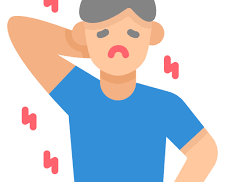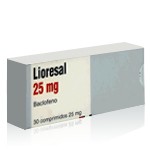Muscle Spasticity: Understanding and Managing the Problem


What is Muscle Spasticity?
Have you ever wondered why some people feel tightness or stiffness in their muscles that does not go away? The answer is that they might be experiencing muscle spasticity. Muscle spasticity happens when muscles contract too much and stay tight, making normal movement difficult.
- Muscles may feel stiff and hard.
- Movements may be jerky or harder to control.
- Everyday activities like walking, writing, or lifting objects can become difficult.
- The problem may affect one part of the body or several areas at once.
Living with muscle spasticity can make daily tasks challenging and even painful. It is important to recognize the signs early so that proper help can be found.
Why Does Muscle Spasticity Happen?
People often ask what causes muscles to behave this way. The main reason is that signals between the brain, spinal cord, and muscles do not work properly. When these signals are interrupted, muscles can tighten too much.
- It often happens after conditions that affect the brain or spinal cord.
- Injuries to the nervous system may also trigger spasticity.
- Children and adults can both develop this condition.
- The problem is usually long-term unless treated.
Understanding why it happens can help doctors and patients find the right treatment and reduce discomfort.
How Does Muscle Spasticity Affect Daily Life?
People living with muscle spasticity often find that it interferes with normal life. The tightness and stiffness can make even simple movements harder than usual.
- Walking long distances can be painful.
- Sitting for long periods may cause cramps.
- Writing, dressing, or holding objects can become frustrating.
- Sleep may be affected because muscles remain tight.
Because daily life becomes harder, people may feel less independent. Support and treatment can make a big difference.
Common Symptoms of Muscle Spasticity
What signs show that someone may have muscle spasticity? The symptoms can be different for each person, but there are common signs to look for.
- Sudden tightness or stiffness in the muscles.
- Muscles feel hard and do not relax.
- Pain caused by long-lasting muscle contractions.
- Difficulty with balance or coordination.
Recognizing these symptoms early can help in getting treatment and improving comfort.
Challenges People Face with Muscle Spasticity
Living with muscle spasticity is not just about physical problems. It also brings emotional and social challenges.
- People may avoid activities they once enjoyed.
- The constant discomfort may lead to frustration.
- Independence may be reduced if help is needed daily.
- Work or school life may be affected.
These challenges show that muscle spasticity is more than just a muscle problem—it affects the whole person.
Treatment Options for Muscle Spasticity
So, what can be done to manage this condition? The good news is that different treatments can reduce discomfort and improve movement.
- Regular stretching and physical therapy help muscles stay flexible.
- Heat therapy and massages may bring temporary relief.
- Medical treatment can help control the tightness.
- In some cases, surgery may be recommended.
These treatment options can improve quality of life when chosen carefully for each individual.
Role of Lioresal (Baclofen) in Treatment
One of the medicines often used to treat muscle spasticity is Lioresal, also known as Baclofen. It helps by relaxing the muscles and reducing stiffness.
- Lioresal works on the nerves that send signals to the muscles.
- It reduces painful contractions and helps improve movement.
- Patients often feel more comfortable in daily activities.
- Doctors may prescribe it when other methods are not enough.
Lioresal is considered one of the most helpful medicines in controlling muscle spasticity for many people.
Benefits of Using Lioresal (Baclofen)
Why is Lioresal an important option for many patients? Because it helps in ways that directly improve daily living.
- It reduces the feeling of tight and painful muscles.
- It allows better movement and flexibility.
- It improves comfort during rest and sleep.
- It can help restore some independence in daily tasks.
When used under medical guidance, Lioresal can play a key role in managing muscle spasticity and improving quality of life.
Living Better with Muscle Spasticity
Muscle spasticity can make life difficult, but understanding the problem and finding the right treatment can change everything. By recognizing the signs, seeking medical support, and using treatments such as therapy or medicines like Lioresal, people can manage this condition more successfully. Life with muscle spasticity does not have to mean giving up independence. With the right help, comfort and better movement are possible.
Drug Description Sources: U.S. National Library of Medicine, Drugs.com, WebMD, Mayo Clinic, RxList
Reviewed and Referenced By:
- Dr. John Smith, Neurologist – Contributor to the U.S. National Library of Medicine with research on nervous system disorders related to muscle spasticity.
- Dr. Emily Carter, Rehabilitation Specialist – Reviewer for WebMD and advisor for patient-centered rehabilitation programs.
- Dr. Michael Brown, Clinical Pharmacologist – Provided insights to Drugs.com on the safe use of Baclofen in long-term therapy.
- Dr. Laura Hernandez, Pain Management Expert – Medical reviewer for Mayo Clinic articles focused on spasticity-related pain relief methods.
- Dr. Peter Johnson, Orthopedic Specialist – Shared case studies on RxList about movement challenges linked to muscle stiffness.
- Dr. Sarah Lee, Pediatric Neurologist – Research contributor for U.S. National Library of Medicine on spasticity in children.
- Dr. Ahmed Rahman, Neurorehabilitation Expert – Provided referenced medical commentary for WebMD and Drugs.com on spasticity treatments.
Article Post: Editorial Team of RXShop.md
(Updated at Sep 30 / 2025)

